Tackling carbon emissions
The NHS has set out an ambitious plan to become the world’s first Net Zero National Health Service. The NHS estimates that the use of medicines account for 25% of total emissions from the health service, it is critical that industry and the NHS work together to develop solutions that support this ambition.
The ABPI has committed to support our members towards delivering the NHS net zero goals.
As global businesses recognising that climate change is a global concern, pharmaceutical companies are taking action at a global level.
Many are setting targets according to the Science Based Targets Initiative, which provides companies with a clearly-defined path to reduce emissions in line with the Paris Agreement goals - limiting global warming to well-below 2°C above pre-industrial levels and pursuing efforts to limit warming to 1.5°C.
What are Scope 1, 2 and 3 emissions?
Greenhouse gas emissions are categorised into three groups or 'scopes' by the most widely-used international accounting tool, the Greenhouse Gas (GHG) Protocol.
Scope 1 covers emissions that a company makes directly – for example while running its boilers and vehicles. Pharmaceutical companies are reducing Scope 1 emissions, for example by generating their own renewable energy, moving to electric vehicles and changing their international distribution networks to minimise emissions.
Scope 2 emissions cover those that the company makes indirectly – like when the electricity it uses, is produced on its behalf by a different company. Pharmaceutical companies are reducing Scope 2 emissions, by switching to renewable energy suppliers. Some either run completely on renewable energy or are working towards it.
Scope 3 emissions cover those are not generated by the company itself, but by any organisation or person they are indirectly responsible for. For example, Scope 3 emissions cover those generated from the suppliers of the components used to make medicines, the transport of raw materials and those generated by people using the pharmaceutical company’s products.
To tackle Scope 3 emissions, many companies are looking at the entire life-cycle of the way they manufacture medicines.
By reformulating medicines so they can be manufactured in a more environmentally friendly way, companies are reducing carbon emissions, saving water and waste and reducing the total environmental impact of what they do.
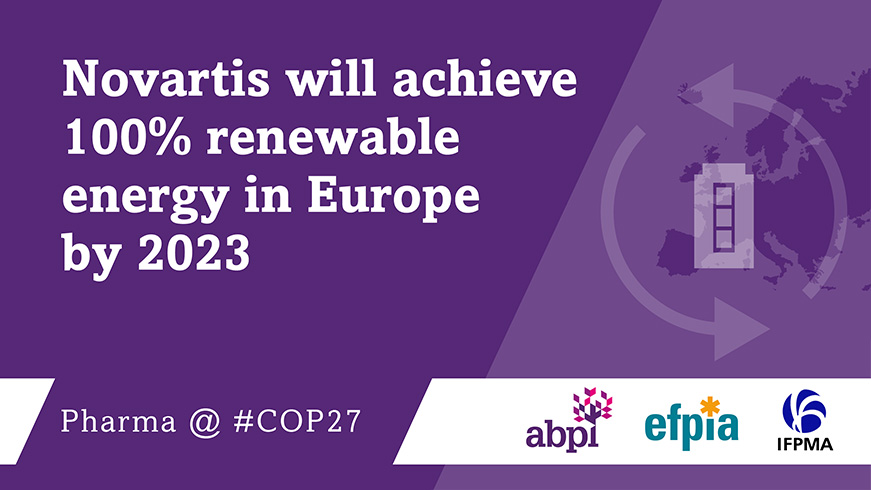
Novartis
Novartis has set a target for full carbon neutrality in its own operations by 2025, and net zero across its value chain by 2040.
One project has consolidated medication shipments and saved emissions in more than 40 clinical trials. From 2021 Novartis will avoid an average of 18,000 shipments per year saving approximately 1,400 tons of CO2 annually.
Novartis ‘Green Expectations from Suppliers Framework’ and a Global Environmental Sustainability team are promoting ethical behaviours and fostering sustainability in their supply chain.
Orion
Orion corporation has worked to reduce its carbon footprint with numerous energy efficiency projects, and in 2019 moved to 100% renewable electricity in Finland. Orion has made a further commitment to achieve carbon neutrality in its own operations by 2030.
One strategic aim is to tackle the carbon impact of inhalers. Orion produces propellant-free powdered inhalers only, which have a carbon footprint 10-37 times lower than pressurised metered-dose inhalers. It has worked to minimise direct and indirect greenhouse gas emissions across its own operations, and that of its suppliers, within the products life cycle. Remaining unavoidable emissions have been offset through projects that protect the world’s lungs, including reforestation in the UK.
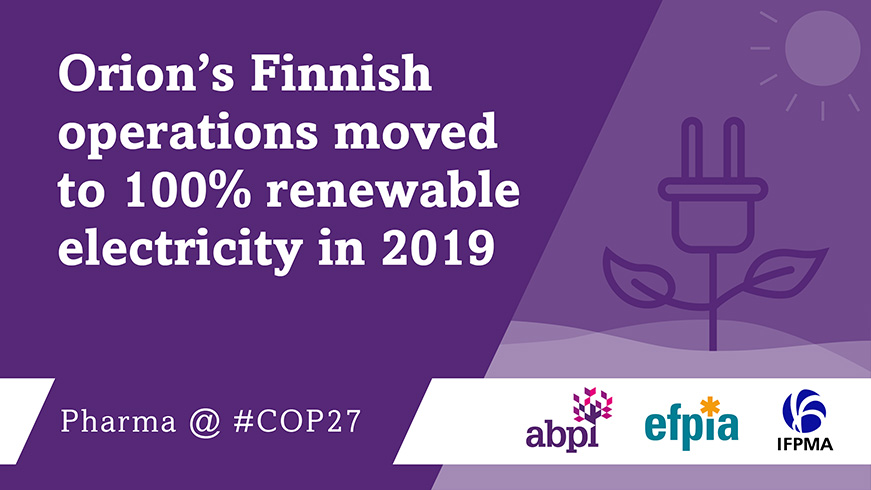
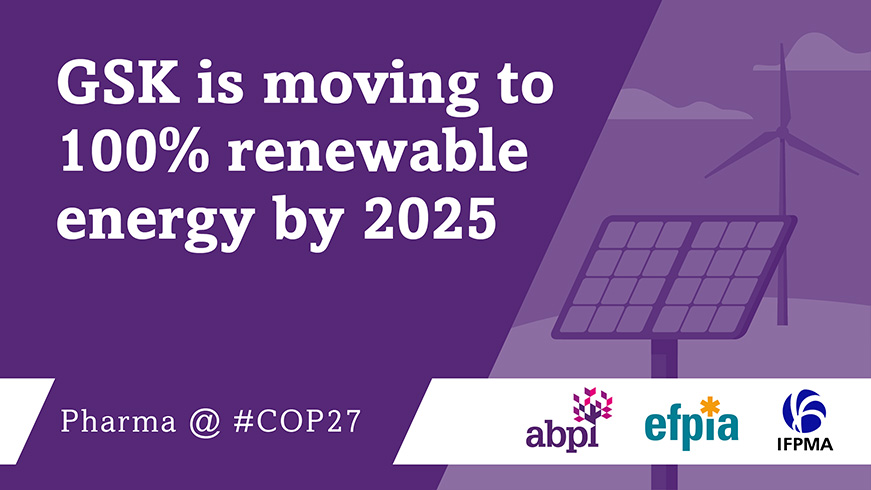
GSK
As part of GSK’s commitment to have a net zero impact on climate by 2030, they have set a target to transition to 100% renewable electricity by 2025. In September 2021, they announced a major £50m investment at manufacturing sites in Irvine in Scotland and the Oak Hill in the US to secure renewable power generation.
This includes new wind turbines and a 20-year power purchase agreement to supply solar electricity for the Irvine facility.
GSK
GSK’s metered dose inhalers for asthma and COPD account for about 40% of their carbon footprint because the propellant used is a potent greenhouse gas. As part of GSK’s commitment to have a net zero impact on climate by 2030, they have started an R&D programme to find a lower-impact propellant that could reduce emissions from their inhalers by about 90%.
In line with the NHS agenda, GSK supports the prescription of lower carbon inhalers where medically possible. GSK has been working towards achieving carbon neutral status (as certified by the Carbon Trust) for its lower carbon inhalers by starting to deliver a product carbon reduction plan and then offsetting the remaining carbon that cannot currently be reduced, including by supporting a reforestation project in Ghana.
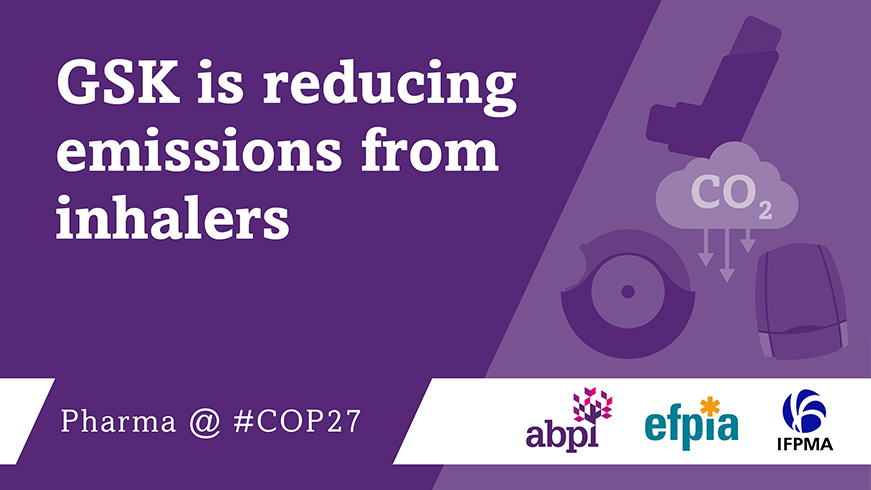
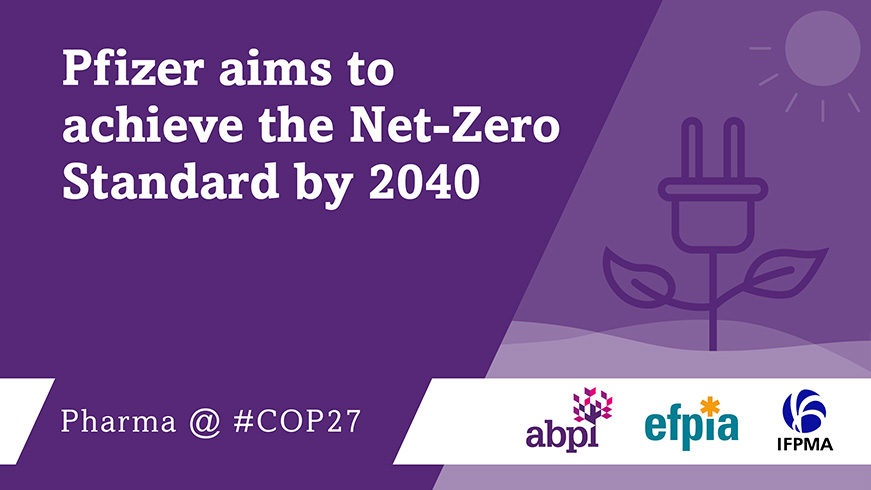
Pfizer
Pfizer has reduced direct GHG emissions by more than 60 percent over the period 2001 to 2020 (2000 baseline) and as one of the first companies to receive validation of GHG reduction goals by the Science Based Target Initiative in 2015, Pfizer remains committed to ambitious long-term actions.
The company has set an ambition to achieve the Net-Zero Standard by 2040. To meet this goal, Pfizer is targeting a 95% reduction in direct (Scope 1&2) emissions and a 90% reduction in emissions across the value chain by 2040.
Lilly
Lilly has partnered with the renewable energy company Enerpower to construct the single largest solar farm in the Republic of Ireland. The 16-acre facility will help power a significant proportion of Lilly’s biopharmaceutical manufacturing facility at Kinsale (near Cork) with sustainable energy. Comprising 12,600 individual panels, the ground-mounted Solar Farm will produce up to 5.6MW of power allowing Lilly to reduce its annual carbon footprint at the site by 2,350 tonnes.
This investment is a key part of Lilly’s global commitment to make its operations carbon neutral by 2030.
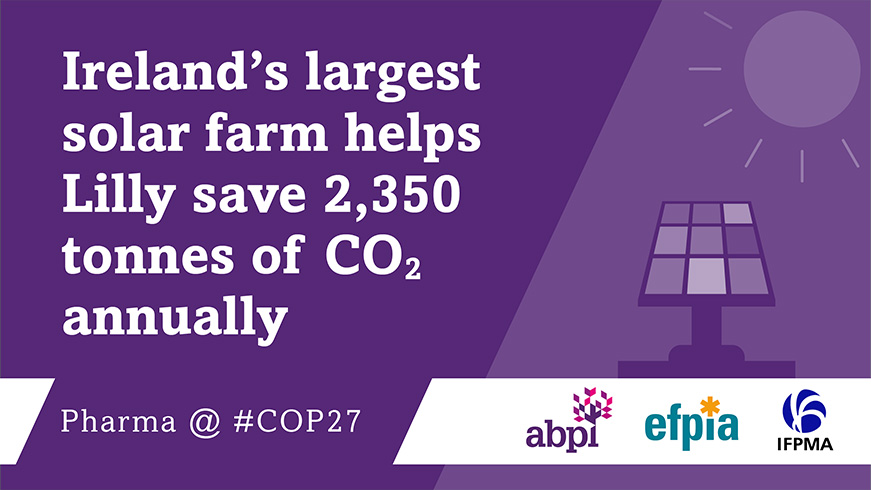
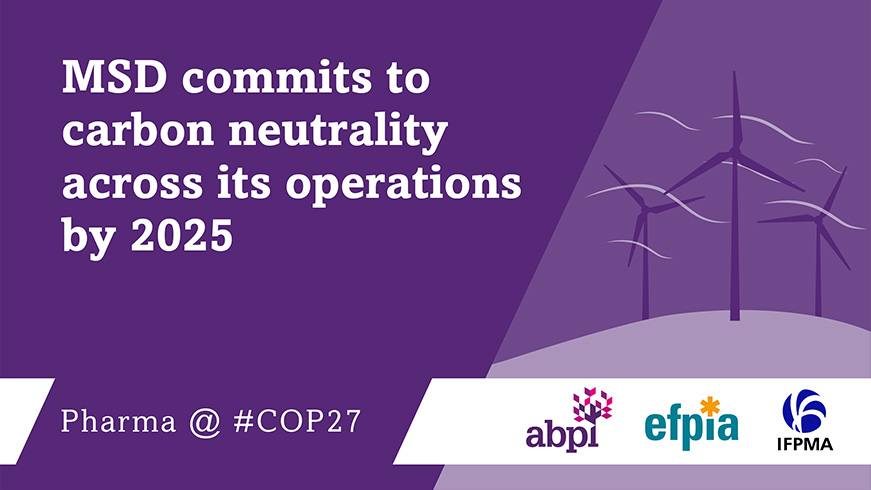
MSD
MSD commits to achieve carbon neutrality across its operations by 2025. It will reduce operational emissions 46% and value chain emissions 30% by 2030, from a 2019 baseline.
MSD has accelerated its previous goal of sourcing 100% renewable energy for purchased electricity by 15 years, to 2025, and has contracted new virtual power purchase agreements (VPPAs) in Europe and the United States that will help achieve the target.
Our Low Carbon Transition Playbook includes a gap assessment for sites to evaluate the maturity of their energy programs and helps create plans to build toward a carbon-neutral future.
Takeda
Takeda has accelerated its goal to achieve net-zero GHG emissions related to operations (scopes 1, 2) before 2035 and its entire value chain, including scope 3 GHG emissions, before 2040.
Takeda achieved carbon neutrality for the first time in 2020 across its entire value chain, delivered by a continued focus on internal energy conservation measures, an increased use of renewable energy and the purchase of high-quality carbon offsets.
Takeda also invests in water stewardship, responsible waste management and biodiversity, and incorporates sustainability principles into its product development stages to minimize the impact of products throughout their life cycles.
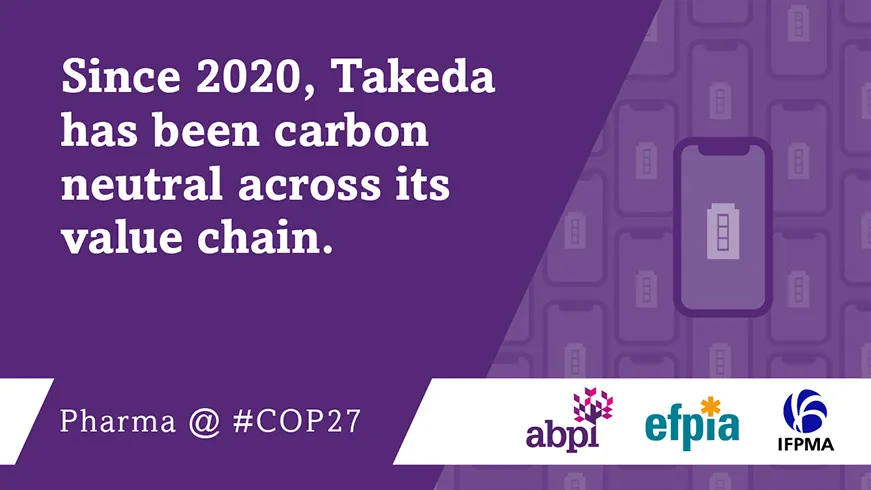
Last modified: 20 September 2023
Last reviewed: 20 September 2023
